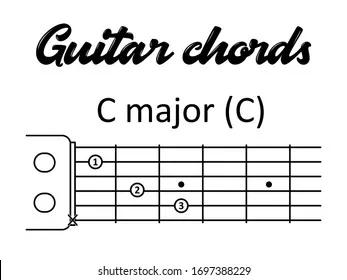Learning to play guitar can feel overwhelming at first—but it doesn’t have to be. One of the most important skills every beginner guitarist needs is knowing how to read guitar chords. Once you understand chord charts, you can play thousands of songs with just a handful of shapes.
In this guide, we’ll break down how to read chord diagrams, practice essential beginner chords, and use them to play your first songs.
What Are Guitar Chords?
A guitar chord is a group of notes played together to create harmony. Most songs are built around chords, so learning them is the fastest way to start making music.
Think of chords as the foundation of songs—the “building blocks” that give structure and emotion to music.
Quick fact: With just three or four basic chords (like G, C, D, and Em), you can play hundreds of popular songs!
How to Read Guitar Chords Diagrams
When you search for guitar chords online or in books, you’ll usually see a chord diagram. This is a visual map that shows you where to place your fingers.
Step 1: Understanding the Diagram
- Vertical lines = guitar strings (from left to right: low E, A, D, G, B, high E).
- Horizontal lines = frets. The top thick line represents the guitar nut.
- Dots or circles = where to place your fingers.
- Numbers = which finger to use (1 = index, 2 = middle, 3 = ring, 4 = pinky).
- “X” above a string = don’t play that string.
- “O” above a string = play the string open.
Step 2: Finger Placement
Example: C Major chord
- Place index (1) on the 1st fret of B string.
- Place middle (2) on the 2nd fret of D string.
- Place ring (3) on the 3rd fret of A string.
- Strum from A string down (don’t play the low E).

Essential Beginner Chords
Here are five beginner-friendly chords you should learn first:
- G Major – Full, bright sound.
- C Major – Common in countless songs.
- D Major – Perfect for folk, rock, and pop.
- E Minor (Em) – One of the easiest chords.
- A Minor (Am) – Essential for emotional, softer songs.
👉 Tip: Practice switching between these chords slowly at first, then speed up as you improve.
Step-by-Step: Playing Your First Songs
Now that you know how to read chord diagrams, let’s use them in real songs!
Song 1: “Three-Chord Classic” Progression
- Chords: G – C – D
- Strumming pattern: Down, down-up, up-down-up
- Try playing four beats per chord.
Song 2: “Beginner Ballad”
- Chords: Em – C – G – D
- This progression (known as the I–V–vi–IV) is used in thousands of songs.
Song 3: “Two-Chord Jam”
- Chords: Am – G
- Alternate between the two while strumming. Perfect for beginners.
Practice Tips for Success
- Start slow – Accuracy is more important than speed.
- Use a metronome – Helps keep your timing steady.
- Press firmly – Make sure notes sound clear, not muted.
- Build muscle memory – Repetition is key.
- Play songs you love – It keeps practice fun and motivating.
Common Mistakes to Avoid
- Not pressing strings hard enough (causing buzzing).
- Accidentally muting strings with unused fingers.
- Ignoring rhythm and strumming consistency.
- Trying to learn too many chords at once.
Focus on a few chords and simple songs before expanding your library.
Conclusion: Your Guitar Journey Starts Here
Learning how to read guitar chords is your first big step toward becoming a guitarist. With just a few shapes, you can unlock thousands of songs and start playing music that excites you.
Remember: practice consistently, focus on smooth chord changes, and most importantly—enjoy the process!
🎸 Ready for the next step? Check out my guide on Beginner Guitar Chord Progressions to keep building your skills.

